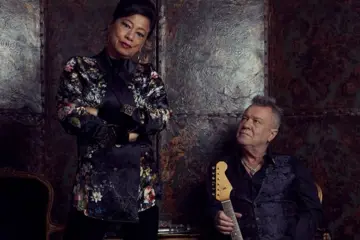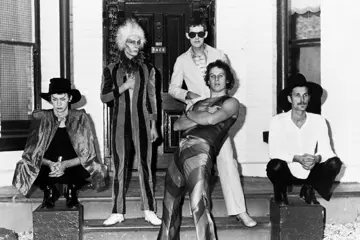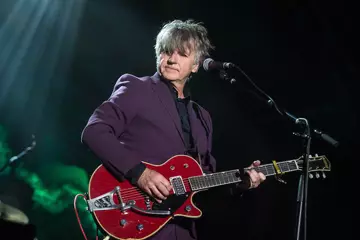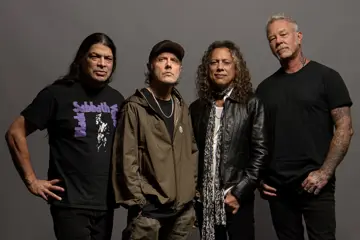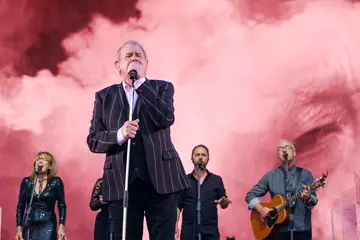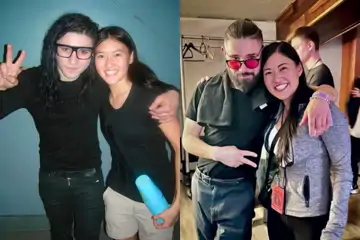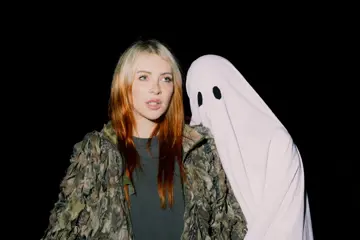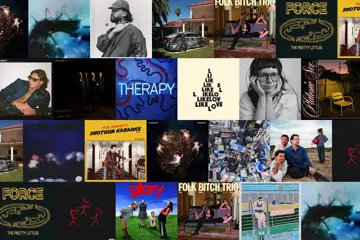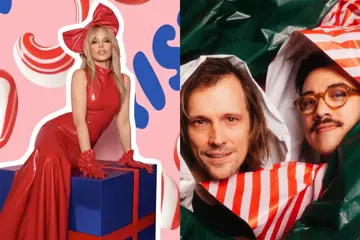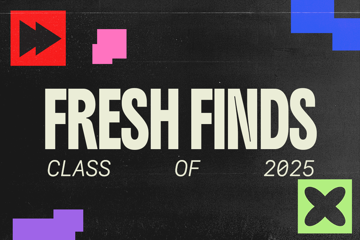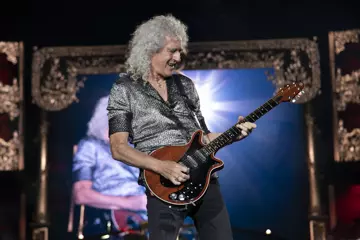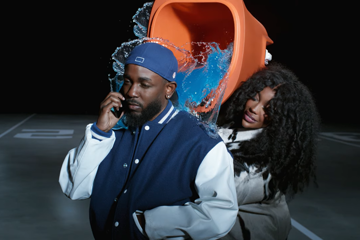From the streets to the skies
Trap, originating in America's south, dominated 2010s hip hop, Migos a brand. Trap foreshadowed the amorphous cloud-rap: lo-fi, outré and sad (and tagged for its atmospherics, as much as for any SoundCloud association). It absorbed psychedelia, goth, grunge and chillwave. Coincidentally, rappers automatically became singers (and, supposedly, slurrers), when in fact, Bone Thugs-N-Harmony pioneered rap-singing in the early '90s. T-Pain, that "rappa ternt sanga", then popularised Auto-Tune. Also formative? The sensibility of Kanye West's 808s & Heartbreak. Lil B made proto-cloud-rap, Harlem's ASAP Rocky the mainstream figurehead. Drake arrived as an emo rapper/singer/melodist, and was somehow more omnipresent than his peer Future. Meanwhile, Tyler, The Creator's crew Odd Future emerged as a counterculture within a counterculture.
Rappers again latched onto the 'Lil' prefix, Lil Uzi Vert blowing up with 2017's zeitgeist XO Tour Llif3. Old school guardians dismissed these spacey proponents as "mumble rappers" (fixating on Lil Yachty). Significantly, the newcomers were preoccupied with feelings, not environs. Their lyrics explored dysfunction, nihilism and existentialism, even as they flexed. Ironically, the "angstas" raised awareness about young men's mental health issues amid widespread prescription drug misuse.
Trap spawned the hardcore offshoot drill, Chicago teen Chief Keef a star. Atlanta's Lil Nas X advanced the subversive country trap with his record-breaking Old Town Road. The new abstract hip hop impacted the Australian scene, too, with Allday eschewing boom-bap solidarity for an individualistic mode.
The art-rap era
In the 2010s, hip hoppers proclaimed themselves auteurs. They challenged not only the limitations imposed on their music (repudiating the term 'rapper'), but also its cultural marginalisation, with art-rap about amplification. Indeed, hip hop is still sidelined at the Grammy Awards, with no rap act winning Album Of The Year this decade. The post-rappers delivered ambitious concept albums, with inventive, hybridised sonics plus curated producers, guests, samples and imagery. Kanye West created maximalist art-rap in My Beautiful Dark Twisted Fantasy, a meta-commentary on fame. He'd influence ASAP Rocky, Young Thug and Travis Scott, Scott's ASTROWORLD a symphonic beat switch.
The ascent of avant'n'B
Don't miss a beat with our FREE daily newsletter
Solange heralded avant'n'B in 2008. This 'alternative R&B' was essentially electronic, yet assumed its intimacy, subliminality and aesthetics from quiet storm. In 2011, Frank Ocean dropped an illwave mixtape, nostalgia,ULTRA., ahead of his seminal debut channel ORANGE. The same year, The Weeknd proffered House Of Balloons, starting a trilogy. Avant'n'b converged with art-rap and Britain's post-dubstep (or night bus), with James Blake at the fore. Inevitably, such experimentalism inspired pop superstars: Beyonce, Rihanna and One Direction's ZAYN. Australia's Sietta gave avant'n'B with a tropical flair. Oh, and Janelle Monae, compared to Prince, presented an Afrofuturist classic in 2010's The ArchAndroid.
"Drop the album!"
Urban formats and marketing were revolutionised in the 2010s. A powerful disrupter, Beyonce instituted the surprise (or stealth) album with 2013's eponymous audiovisual masterpiece, precipitating a new laissez-faire promotion via social media virality and stan-prompted hype. Kanye West turned the album rollout into a (chaotic) spectacle. Artists hosted pop-up stores and (US) festivals. Drake cannily exploited meme culture, and, as a streaming don, positioned 2017's More Life as a "playlist". The internet afforded independent clout to Chicago's Chance The Rapper. Some figures, like HER, cultivated mystique. Reclusive Brit genius Jai Paul, behind the synth-funk BTSTU, unwittingly generated conspiracy theories that he himself leaked his album in 2013 (he didn't).
World views
The hip hop scene especially was once noted for US regionalism, but it further decentralised in the 2010s. As a Canadian, Drake cracking the US was unprecedented. Music connected the African diaspora. The grime revival went global, with Drake a champion (Giggs featured on More Life). Stormzy headlined 2019's Glastonbury. Even bigger worldwide was dancehall, Jamaica's Popcaan co-signed by Drizzy. Latin urban surged, too – Luis Fonsi's 2017 Despacito alongside reggaeton legend Daddy Yankee ubiquitous this decade. Colombia's J Balvin repped Latin trap. Kendrick Lamar's Black Panther: The Album showcased South African artists such as Gqom trailblazer Babes Wodumo. And, with Afrobeat superseding trop-house, Nigeria's Burna Boy was an in-demand collaborator.
88rising was a vital platform for Asian urban-pop creatives, launching Indonesian star Rich Brian. Back home, REMI was the first hip hop act to receive the Australian Music Prize in 2014. Increasingly, Australian R&B and hip hop performers found an international audience. Melbourne's future soulsters Hiatus Kaiyote were twice Grammy-nominated and prestigiously sampled.
Watch the throne
Despite generationalism in urban circles – and purists lamenting neoteric transgression – traditional wordplay and instrumentation flourished. The poetic Kendrick Lamar ventured into jazz-hop on 2015's To Pimp A Butterfly, with Flying Lotus' input. The late Mac Miller engaged in authentic and communal musicality. Anderson .Paak out-vibed Bruno Mars. The Internet reformulated neo-soul. The UK pop-soul balladeer Adele became a household name, as did Sydney prodigy Ruel here. Still, seasoned MCs like Snoop Dogg, JAY-Z and Eminem sustained their careers.
A change is gonna come
Hip hop has long been utilised to both expose racial inequality and assert identity. But the intersections between race, gender and sexuality were the 2010s' focus. Kendrick Lamar's hip hop soundtracked the #BlackLivesMatter movement (he was awarded the Pulitzer Prize For Music with DAMN.). AB Original – the super-duo of Briggs and Trials – led an Indigenous Australian wave. Beyonce manifested a new black corporeal feminism. Hip hop has a historical gender imbalance, female MCs tokenised, yet the multi-faceted Nicki Minaj defied that. She was followed by credible spitters Little Simz, Cardi B, Megan Thee Stallion and the crossover phenom Lizzo. Azealia Banks would be infamous for her bop 212, critiques and feuds. Australia's rap queen, Tkay Maidza was nominated for BET's Best New Interactional Act, while Sampa The Great was the first woman of colour to win an ARIA in hip hop. However, with intensifying callouts of white artists co-opting black idioms, Aussie expat Iggy Azalea was the decade's most contentious culture vulture, being accused of minstrelsy.
The scene generally opened, expanded and diversified, the 2010s defined by greater LGBTQIA+ visibility. Janelle Monae, Frank Ocean and Tyler, The Creator all expressed queer identity. Nevertheless, the urban music industry was scrutinised internally, with #MeToo engendering discussion about toxic masculinity, and R Kelly finally being cancelled over pervasive allegations of sexual abuse.
The future for urban music is auspicious. R&B and hip hop acts are leading popdom with bold creative statements and compelling personal, political and cultural perspectives, establishing themselves as icons and role models alike.

